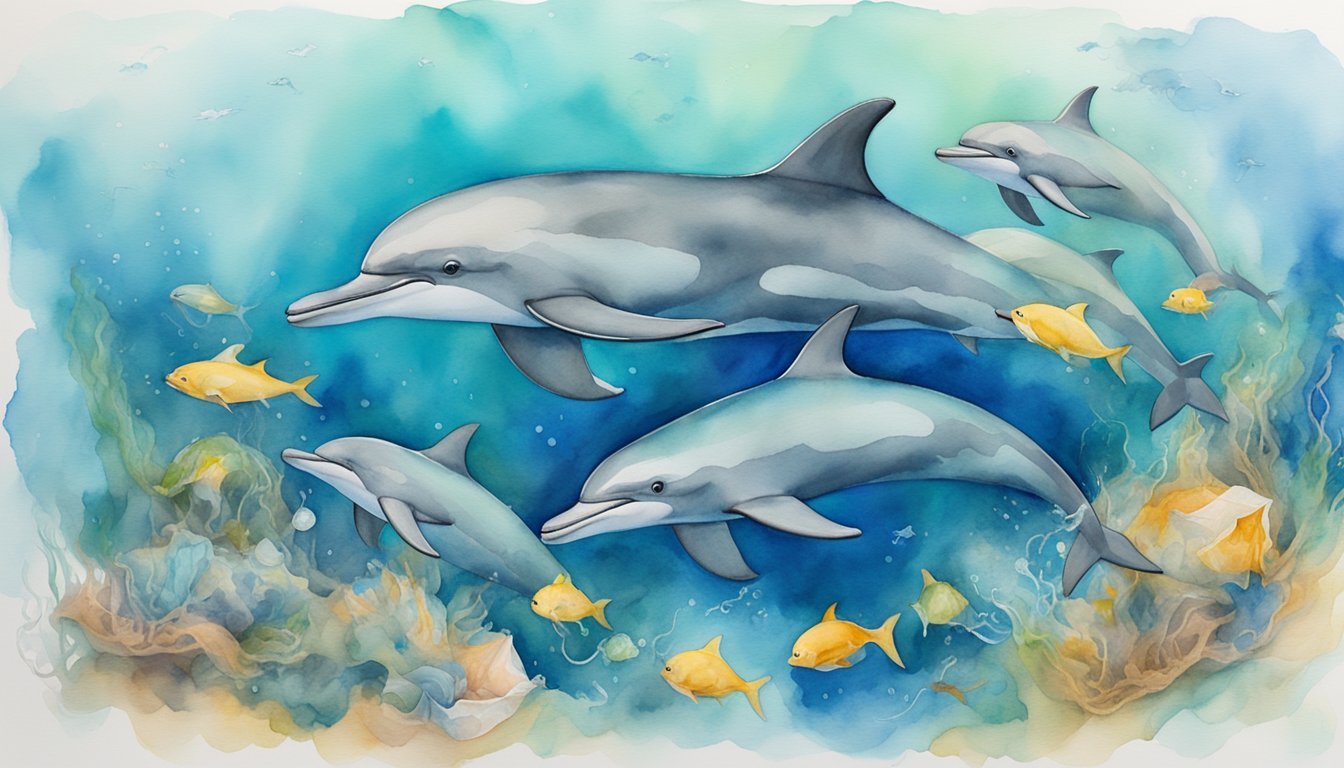Dolphin Characteristics and Behavior
Dolphins are renowned for their advanced intelligence, social behaviors, and remarkable physical adaptations that allow them to thrive in marine environments. What follows is an exploration of their anatomical features and unique traits that define their interactions and survival strategies in the ocean.
Anatomical Features
Dolphins possess a streamlined body shape ideal for efficient swimming, with speeds reaching over 20 miles per hour for species like the common dolphin. Their flippers aid in steering and they have a strong fluke tail used for propulsion. The blowhole at the top of the head provides a quick and efficient way to breathe at the surface. In terms of size, dolphins can vary greatly, with the orca, also known as the killer whale, being the largest dolphin species.
Social and Playful Nature
Dolphins are highly social creatures, often seen in pods that can number in the dozens to hundreds. These groups facilitate intricate social relations, cooperative hunting, and playful interactions. Engaging in activities such as riding the waves and bow riding, dolphins are known for their playful behavior, a sign of their intelligence and complex social structures.
Communication Skills
They communicate using a variety of clicks, whistle-like sounds, and body movements. These sounds are not only a means of staying together as a pod but also play a role in reproduction and echo-location. Dolphin language is an area of significant interest due to its complexity and potential similarities to human communication.
Echolocation and Hunting Techniques
Dolphins use echolocation to locate and hunt prey, emitting sounds and listening for echoes that bounce off objects, such as fish or invertebrates, in their environment. This ability is crucial for dolphins, especially in the murky waters of rivers where species like the Amazon river dolphin or boto reside. Hunting techniques can be sophisticated, often involving teamwork where a pod works together to round up schools of fish.
Dolphin Conservation and Threats

Dolphins are cherished marine mammals, yet many species face the threat of extinction. Industrial activities and changes in the environment have significantly impacted their survival.
Endangered Species and Protection Efforts
Among the 41 recognized species of dolphins, several are listed as endangered, including the Amazon river dolphin and the Irrawaddy dolphin, which are pivotal to their respective ecosystems. Efforts to protect these animals have led to the establishment of sanctuaries and stricter fishing regulations. The orca, also known as the killer whale, is among the dolphin species that have been the focus of conservation programs, especially in regions of Asia and South America.
Noteworthy initiatives include international agreements like the one resulting from the Global Declaration for River Dolphins. Nine countries have collectively undertaken the task to safeguard endangered dolphins, aiming to address the steep population decline that has been observed since the 1980s. For instance, the population of Chinese river dolphin, also known as the baiji, sadly has reached a point where it may now be functionally extinct.
Human Impacts and Environmental Challenges
Dolphins are faced with a barrage of environmental challenges, notably from human activities. Fishing nets are a significant threat, as dolphins can become entangled and consequently drown. Coastal waters around the world, but particularly those in India, have become hotspots for human-induced risks to dolphins.
Industrial actions, like those contributing to climate change, are altering oceanic conditions, potentially affecting dolphin reproductive rates and prey availability, such as fish and squid. Another specific challenge for these marine creatures is exposure to sonar and other kinds of noise pollution. This can disrupt their communication and navigation abilities, deeply affecting species such as Maui’s dolphin and the Right whale dolphin, which rely heavily on sound.
Through concerted global efforts to reduce threats and protect critical habitats, there is hope that the trends of decline can be reversed, ensuring the longevity of these remarkable creatures for future generations to witness.

